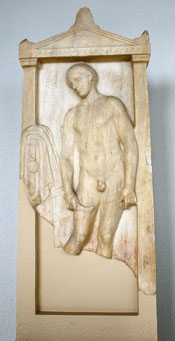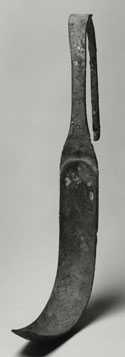2 ‘Habitus’
Activity 1
Write a list of things that you have done with your body since you got up this morning. Where did you sleep? Did you have a bath or shower? Did you eat breakfast? Where are you now? As you ponder these questions, I would also like you to write down all of the physical things around you that have played a part in those things: furniture, tools and infrastructure. Jot down some notes for each of these on how they relate to the culture in which you live. Think about how your environment has determined how you go about certain things, and even whether you go about them at all.
Discussion
Most of you will have woken up in a bed. While all humans sleep, their beds can look very different depending on their culture and climate. Your bed is a cultural construct. If you’re like me you were woken by an alarm clock. In the long view of human history, this is a very recent invention. Mine goes off at the same time every day, but even this is a characteristic of the society in which I live. Other people and people in other cultures wake at different times each day according to their needs, or respond to more natural impulses like daylight and birdsong, which fluctuate from season to season. Many people in the ancient world would have lived by this kind of clock. I had a bath this morning, finding it normal to wash every morning, but this is something that I was taught to do – in some societies a wash every morning would be considered excessive, in others it would be deemed insufficient. In many western countries I might have been expected to have a shower – baths, if existent at all, being the preserve of children or the elderly. In ancient Rome, bathing was generally done communally in a public bath. Even the fact that I have a bathroom in my flat is something that has a specific history in modern western culture relating to how we expect to live our lives. Referring to the post-war fashions for alfresco dining and indoor bathrooms, my grandfather once declared that the world had gone mad because people were going outside to eat, but coming inside to defecate!
Moving on with your day, did you have breakfast? I had muesli and orange juice; both things we readily associate with breakfast, but which are in fact arbitrary foodstuffs our society, for one reason or another, has assigned to the breakfast table. Even the idea of breakfast and the three-meal day are rituals our society has invented. In another society I might have had only one meal later on in the day, or be tucking into a communal bowl of hot rice or lentils. You probably put on some clothes and maybe did something with your hair. Again, the society in which you live will have had an effect on how you did your hair and what clothes you chose to wear. If you have left your home like I have, you will probably have put on a different set of clothes than if you were staying at home. Depending on your cultural background, going outside might also have meant covering up key parts of your body such as your hair. In ancient Greece, respectable women were expected to veil their heads whenever they were in public. This rule applied to Roman women too, but we do not have evidence that it was followed very often!
What this exercise has attempted to highlight is that some of the things associated with our bodies that we take entirely for granted are in fact deeply embedded in our cultural background. There is a specific cultural history behind when we wake, what we eat and whether or how we clean our teeth. This may seem simple – even banal – to you, but that is far from the truth. If, in 2,000 years’ time, archaeologists were to dig up the remains of our households or read written accounts of our bodily routines, they would, even if they had nothing else, already be able to say a great deal about us: the alarm clock would tell them that our society had the concept of the regular working day; our clothes would tell about which parts of our body we considered proper to cover, what it was acceptable to reveal, and how we constructed gender and other identities in appearance. Our plates, cutlery, tables and chairs would tell them we ate communally, but from separate vessels; they might guess that meals were social occasions over which we talked about our day or shared jokes. If they found written internal memos pertaining to the homes of important political figures, they might discover an important decision was negatively influenced because of the poor quality of the meal over which it was discussed. History and culture cannot be separated from the body.
All of this relates to what the French sociologist and anthropologist Pierre Bourdieu has called ‘habitus’ (1990, pp. 52–79). He was writing mainly about modern society, but his theories can be applied to human society in general, including the ancient world. In its essence, this concept denotes the way bodies interact with the world around them. It holds that all the everyday things that we do – and take for granted – and all the ways that we think about these things are actually determined by the structures and beliefs of the society in which we live. However ‘normal’ or ‘natural’ they may feel to us, in fact these are but learned processes. Through this view, human experience becomes ‘embodied’. But why does this matter? Surely it stands to reason that in, say, the history of food, someone is eating it, and in the history of dress someone is wearing it. Well, it’s not quite as simple as that. How we interpret the shreds of evidence from the ancient past that have come down to us depends very much on what framework we use to interpret them. When looking at artefacts in archaeology, for example, a key question here would be: “Are we interested in the object itself, or is it more important what was done with it?”. The following exercise will get you thinking about this, and demonstrate that even the most banal human activities could be done in a very different way in the ancient world.
Activity 2
Consider the object in Figure 3. You may already know what it is, but if you don’t, take a good look at it, and try to think how it might be used: what are the different parts, what could they be used for? When you have finished looking at it, reveal the discussion for the solution.
Discussion
This item is called a strigilis. The Greeks and Romans used it to clean themselves. It is essentially a kind of scraper, used to scrape oil and sweat off the surface of the body, like the man in this grave stele from classical Athens demonstrates (Figure 4).

We take it for granted that when we wash ourselves in the shower or bath, we use some kind of soap that lifts grease and dirt which we rinse off, leaving our skin dry. But whilst soap was known in the ancient world, it was associated with the cultures of northern Europe. When Greeks and Romans went to the bath, they used an entirely different method of cleaning. They took with them a flask containing oils, a strigilis and a towel. They would immerse themselves in water – often of different temperatures including a hot bath in order to sweat – and then dry themselves off using the towel. After that, they would massage – or be massaged – using the oils from the flask, and then scrape the oils and sweat off their skin using the strigilis. In other words, this implement reveals a whole very peculiar world of habit in the ancient world – the culture of bathing. It also tells us about how differently the ancients viewed what it meant to be ‘clean’. It is hard for us to imagine getting up in the morning and scraping ourselves down with what looks for all the world like a bent butter knife! In the way that it is made the strigilis may look to us more like a kitchen implement or DIY tool, but in terms of habitus its modern equivalent would be more accurately found in the idea of the common flannel!

